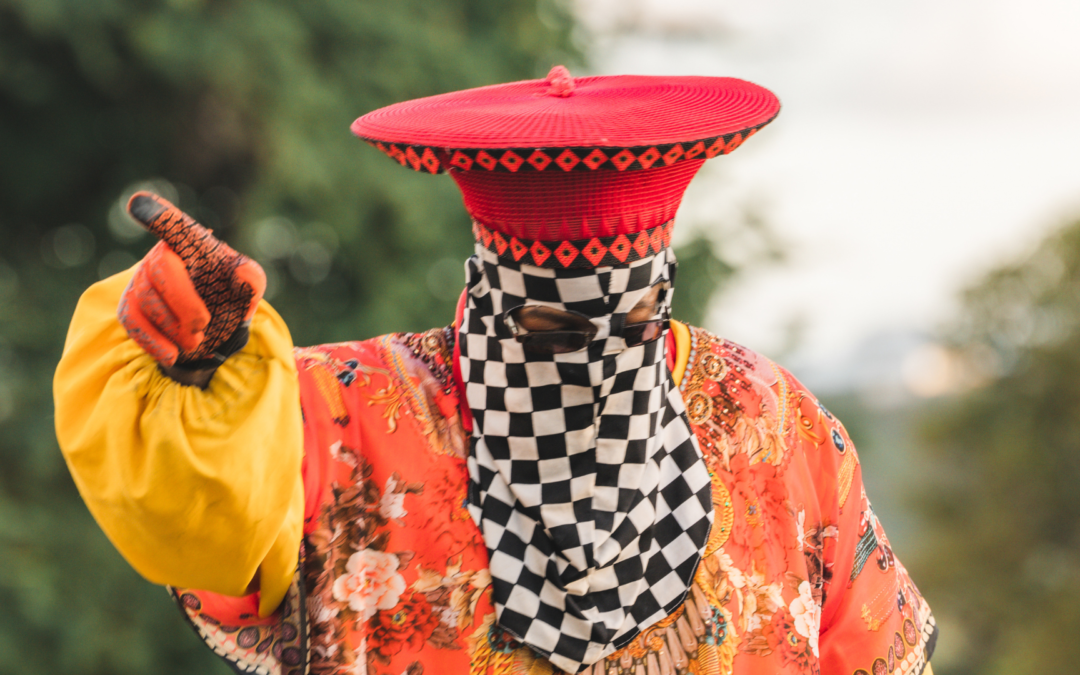Caribbean folklore is filled with enchanting tales of mythical creatures and supernatural beings that have fascinated and intrigued generations. Among these creatures, one stands out in particular: the Jumbie. Often associated with fear and mystery, Jumbies have captivated the imaginations of Caribbean people for centuries. In this in-depth exploration, we will delve into the origins, roles, legends, and rituals surrounding Jumbies, ultimately seeking to unravel the enigmatic nature of these otherworldly entities.
Table of Contents
Unveiling the Origin of the Jumbie
Before we can begin to understand the significance of Jumbies in Caribbean culture, it is essential to uncover their origins. The term “Jumbie” is believed to be derived from the West African term “Djumbi,” which refers to spirits or ghosts. The transatlantic slave trade brought various African cultures to the Caribbean, and with them came the belief in spiritual entities. Over time, these beliefs merged with indigenous practices and European folklore, giving rise to the unique concept of the Jumbie.
While the exact nature of Jumbies varies across different Caribbean islands, they are generally considered to be spirits of deceased individuals who have not found their final resting place. This belief stems from the African and indigenous Caribbean belief in an afterlife and the presence of spirits in the physical realm.
On some islands, Jumbies are said to be mischievous entities that roam the night, playing tricks on unsuspecting individuals. In other traditions, Jumbies are seen as protectors of the natural world, ensuring that balance is maintained between the physical and spiritual realms. The concept of the Jumbie is deeply intertwined with the cultural identity of the Caribbean, reflecting a complex tapestry of beliefs and practices that have evolved over centuries.
Stories of encounters with Jumbies have been passed down through generations, serving as cautionary tales or as a way to explain the unexplainable. The fear and respect for these spiritual beings have shaped Caribbean folklore and continue to influence contemporary art, literature, and music. Understanding the origin of the Jumbie provides a glimpse into the rich cultural heritage of the Caribbean and the enduring legacy of diverse cultural influences.
The Role of Jumbies in Caribbean Culture
Caribbean culture is deeply intertwined with the presence of Jumbies. These supernatural beings are often portrayed as both malevolent and protective. Some believe that Jumbies seek to torment the living, while others regard them as guardians of certain places or individuals.
One popular belief is that Jumbies can possess individuals, influencing their behavior and causing illness or misfortune. This belief has led to rituals and practices aimed at warding off Jumbie possession, such as the use of protective charms or performing specific ceremonies.
Furthermore, Jumbies are said to have a strong connection to nature, often being associated with specific trees, rocks, or bodies of water. In some Caribbean communities, certain locations are believed to be inhabited by Jumbies, and locals may avoid these areas out of respect for these supernatural entities.
Additionally, stories of encounters with Jumbies have been passed down through generations, contributing to the rich oral tradition of Caribbean folklore. These tales serve not only as entertainment but also as cautionary reminders of the power and influence of the spirit world in everyday life.
Common Jumbie Legends and Tales
The rich folklore of the Caribbean is replete with captivating stories of Jumbies and their encounters with humans. These legends often serve to explain natural phenomena or cautionary tales to impart moral lessons.
One famous Jumbie tale recounts the story of a fisherman who defied the warnings of his peers and ventured into forbidden waters. As a result, he was cursed by a Jumbie and transformed into a sea creature, forever doomed to roam the depths of the ocean. This cautionary tale serves as a reminder to respect the boundaries set by the supernatural world.
Another intriguing Jumbie legend tells the tale of a mischievous spirit that haunts the old cotton fields of Barbados. Known as the “Cotton Mab,” this Jumbie is said to appear on moonlit nights, whispering secrets to those who dare to listen. It is believed that those who heed the Cotton Mab’s words will be blessed with good fortune, while those who ignore its warnings will face misfortune.
These stories of Jumbies not only entertain and thrill listeners but also provide a glimpse into the cultural beliefs and values of the Caribbean people. They serve as a reminder of the importance of respecting traditions and heeding the wisdom of those who came before us.
Jumbies in Different Caribbean Islands
The belief in Jumbies varies between different Caribbean islands, with each region having its own unique interpretation of these mystical beings.
In Jamaica, Jumbies are often associated with duppies, another term for spirits or ghosts. Duppies are believed to haunt specific places or individuals and can be appeased through various rituals or offerings.
In Trinidad and Tobago, the belief in Jumbies is prevalent during the annual Carnival celebrations. Many participants wear costumes representing various mythical creatures, including Jumbies, as a way to connect with their cultural heritage and engage in vibrant displays of artistic expression.
In Barbados, Jumbies are known as “haints” and are believed to be mischievous spirits that roam the island at night. It is said that haints can be heard whispering in the wind and are often blamed for unexplained occurrences such as objects moving on their own.
On the island of Grenada, Jumbies are thought to be protectors of the forests and natural landscapes. They are said to guard the flora and fauna from harm and are revered by the local communities who leave offerings of fruits and flowers to show their respect.
The Connection Between Jumbies and Nature
Jumbies are often closely associated with elements of nature, such as forests, rivers, or specific types of trees. Many believe that these supernatural beings have the ability to shapeshift or inhabit natural elements, allowing them to blend in with their surroundings.
This connection between Jumbies and nature is deeply rooted in Caribbean mythology and highlights the close relationship between humans and the natural world. It serves as a reminder of the importance of respecting and preserving the environment.
Furthermore, in Caribbean folklore, Jumbies are often depicted as guardians of the natural world, protecting sacred sites and ensuring the balance of ecosystems. They are believed to possess ancient wisdom and knowledge of the land, making them both feared and revered by locals.
Legends tell of Jumbies appearing in times of environmental crisis to warn humans of impending danger or to punish those who disrespect nature. This folklore serves as a cautionary tale, emphasizing the consequences of neglecting our connection to the earth and the spirits that inhabit it.
How Jumbies are Perceived in Modern Society
In modern Caribbean society, the perception of Jumbies has evolved. While some individuals still hold strongly to traditional beliefs and rituals, others view Jumbies as fictional characters in folklore or simply a source of entertainment.
Jumbies are often featured in literature, music, and visual arts, allowing the younger generation to engage with their cultural heritage and appreciate the rich tapestry of Caribbean folklore.
Moreover, the portrayal of Jumbies in popular culture has led to a resurgence of interest in traditional storytelling and oral traditions. Many communities now host Jumbie-themed events, such as storytelling nights or Jumbie costume contests, to celebrate and preserve their cultural heritage.
Additionally, the concept of Jumbies has transcended Caribbean borders and has influenced art and literature globally. Artists and writers from different parts of the world have drawn inspiration from Jumbie folklore, incorporating elements of these mystical beings into their work to create captivating and diverse narratives.
Rituals and Practices Associated with Jumbies
Various rituals and practices are associated with Jumbies, aimed at appeasing or warding off these supernatural beings. These rituals often involve the use of specific herbs, candles, or spiritual invocations.
One such practice is the creation of “spirit bags” filled with protective items, such as herbs or personal belongings, which are believed to ward off Jumbie interference. These bags are typically carried by individuals as a form of spiritual protection.
Famous Jumbie Encounters Throughout History
Throughout history, there have been numerous accounts of individuals claiming to have had encounters with Jumbies. These encounters range from eerie sightings to unexplained occurrences that defy logical explanation.
One famous story tells of a plantation owner in Barbados who was plagued by mysterious happenings on his property. The locals attributed these disturbances to a mischievous Jumbie seeking retribution for past injustices. Despite attempts to exorcise the Jumbie, the strange phenomena persisted, leaving many baffled and intrigued.
Debunking Myths About Jumbies
While Jumbies are often associated with fear and the supernatural, it is important to separate fact from fiction. Many misconceptions surround these mystical beings, leading to misunderstandings and false beliefs.
One common myth is that Jumbies are solely malevolent entities out to harm humans. In reality, Jumbies can assume a range of personas, from benevolent protectors to mischievous tricksters. Understanding the diverse nature of Jumbies allows us to appreciate their multifaceted presence in Caribbean folklore.
Embracing the Enigmatic Nature of Jumbies
Caribbean folklore would not be complete without the enigmatic presence of Jumbies. These supernatural beings continue to captivate the imaginations and intrigue individuals of all ages. Whether viewed as symbols of caution or representations of cultural identity, Jumbies serve as a testament to the enduring power of folk traditions.
As we have embarked on this deep dive into Caribbean folklore and the mysteries of the Jumbie, we have gained a glimpse into a world where the lines between the spiritual and the physical blur. Embracing the enigmatic nature of Jumbies allows us to appreciate the rich tapestry of Caribbean culture and the enduring legacy of its folklore.
Jumbies in St. John, USVI
In St. John, USVI, the presence of Jumbies is celebrated through vibrant cultural expressions. You can often see people in costume dressed as Jumbies, especially during festivals and cultural events, highlighting the enduring legacy of these spirits in local traditions.
Additionally, St. John is home to the picturesque Jumbie Beach. This short stretch of white sand, fringed with sea grapes, is said to be protected by Jumbie spirits. The beach’s dramatic setting, with a fair amount of wind and surf, adds to its mystical allure. While the north shore beaches can be rough, Jumbie Beach offers a wonderful spot to relax, with aqua green water at your toes and soft white sand underfoot. The limited parking ensures that the beach never gets overcrowded, making it a serene escape.
If you plan to visit Jumbie Beach, a serene stretch of white sand on the beautiful island of St. John, USVI, be sure to include a visit to The Windmill Bar in your itinerary. Nestled nearby, the Windmill Bar offers a perfect spot to relax and enjoy a refreshing drink while immersing yourself in the local island vibe. With our cozy ambiance and welcoming staff, Windmill Bar is a great place to unwind and soak in the Caribbean atmosphere. For more information, check out The Windmill Bar website.


